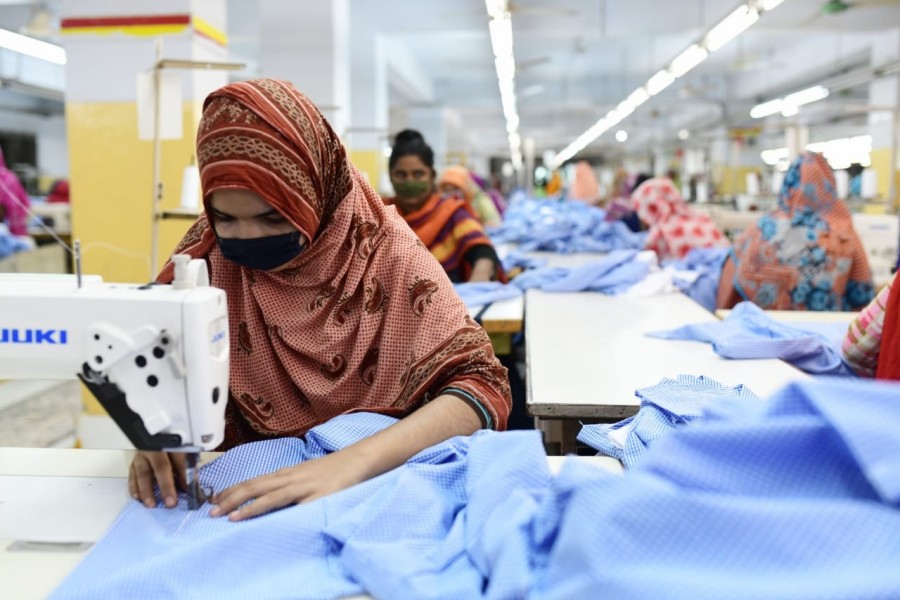Bangladesh's readymade garment (RMG) exports to China have dropped during last couple of years as some 53 items still face duty barrier, industry-insiders say, further affecting lopsided balance of trade.
Two other lately emerging major decelerators are also attributed to the downturn-- one is the Covid-19 pandemic and the other trade war between China and the United States.
These two extraneous factors forced Beijing to look inward to use its capacity to meet local demand for products.
Bangladesh's apparel products exports to China during the first half of the current fiscal year declined over 21 per cent to US$ 110.39 million from $139.81 million during the corresponding period of last fiscal.
Chinese apparel imports from Bangladesh stood at US$506.51 million in 2018-19 in a rise from only $52.81 million in FY 2010-11, according to Export Promotion Bureau data.
The export figure thereafter declined to US$ 271.28 million and US$329.96 million in FY 2020-21 and 2019-20 respectively, data showed.
Asked about the fall, Bangladesh Garment Manufacturers and Exporters Association (BGMEA) director Abdullah Hil Rakib said there were 226 apparel items in HS8 tariff schedule for which Bangladesh used to enjoy duty-free access under the Asia-Pacific Trade Agreement (APTA). And the recent extension of the product coverage by China, published on July 1, 2020, extended the RMG coverage to 299 in HS8 digit.
An analysis shows that Bangladesh exported US$506.5 million worth of garments to China in FY2018-19 and 93 items out of these exports enjoyed duty-free access.
These 93 items fetched US$308 million, he said, adding that garments worth US$198 million had to face duty on entry to China at varying MFN rates (average 16 per cent).
"Through the recent WTO notification, 299 RMG items in HS8 are allowed duty-free access to China, yet for 53 RMG items we need to pay duty there," he says.
"The BGMEA has already informed the government authorities concerned, including commerce ministry, about the matter and we are working on it," he told the FE on Sunday.
Talking to the FE, Bangladesh Knitwear Manufacturers and Exporters Association (BKMEA) executive president Mohammad Hatem said China reduced its purchase and met local demand through its own production because of the China-US trade war.
Echoing Mr Hatem's views, its vice president Fazlee Shamim Ehsan says China's export to the world, including the USA and the European Union, also forced the former country to use its capacity through local consumption.
"Besides, local exporters are also focused more on the EU and the US as they have been exporting to these two markets for long," he noted.
Irfanul Hoque, director of Fatullah Fabrics Ltd, says China mostly imports low-end products from Bangladesh.
In recent months, Chinese buyers also slowed in placing orders due to the high price of yarn, he adds.
Explaining the potential, Mr Rakib says China's annual import of apparel is around $7.56 billion and with the increase in per-capita income and standard of living, the need for clothing is growing there.
Per-capita clothing consumption increased from $80 in 2001 to around $240 in 2018.
"China is one of the new emerging markets for Bangladesh," he says, demanding requisite government measures to ensure duty-free access for all RMG items to the current world's second-largest economy.
Overall bilateral trade between the two countries was worth $13.6 billion in FY 2020-21 with Bangladesh imports from China accounting for $12.9 billion against exports worth 0.7 billion, according official statistics, leaving a yawning trade gap against Dhaka.


